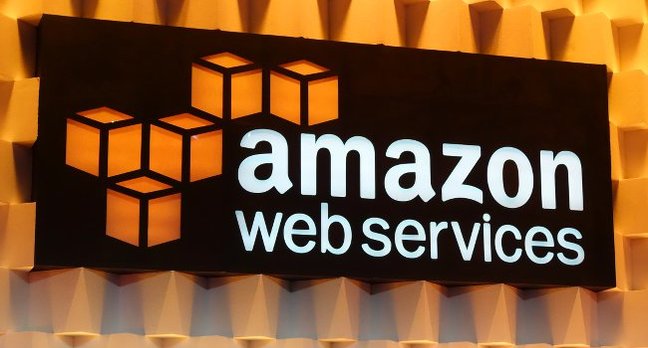There’s constant talk about the top cloud service providers being in a price war against each other. That war is reportedly being promoted and executed by none other than current cloud leader Amazon Web Services. At 1redDrop, we wanted to know the reality of the situation, so we took a look at one of Amazon’s key cloud services – Simple Storage Service, or Amazon S3 – that Amazon has regularly been announcing price cuts for on their blog.
Back in 2008, just a year after Steve Jobs launched the first iPhone, Amazon announced tiered pricing for its S3, charging customers based on how many terabytes they used during a given billable month.
Their pricing chart looked like this on 08 October 2008:
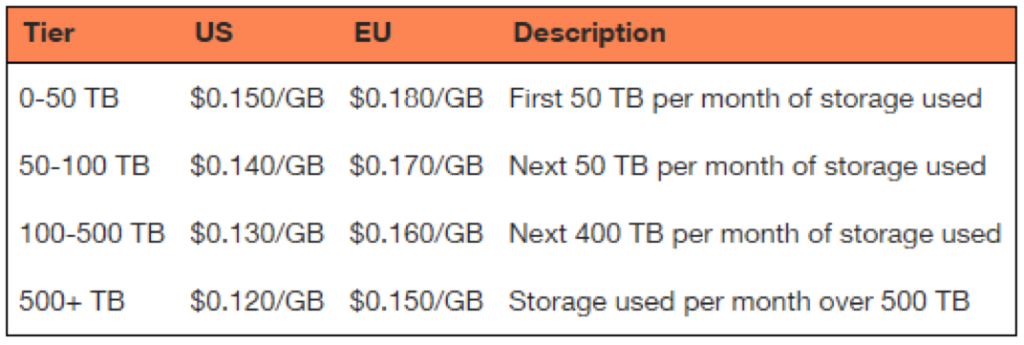
At the time, AWS had two sets of tiers for its S3 pricing – one for the U.S. and one for Europe. Over time, that evolved a lot, until it finally looked like this as of 21 Nov 2016 – a little more than 8 years later:
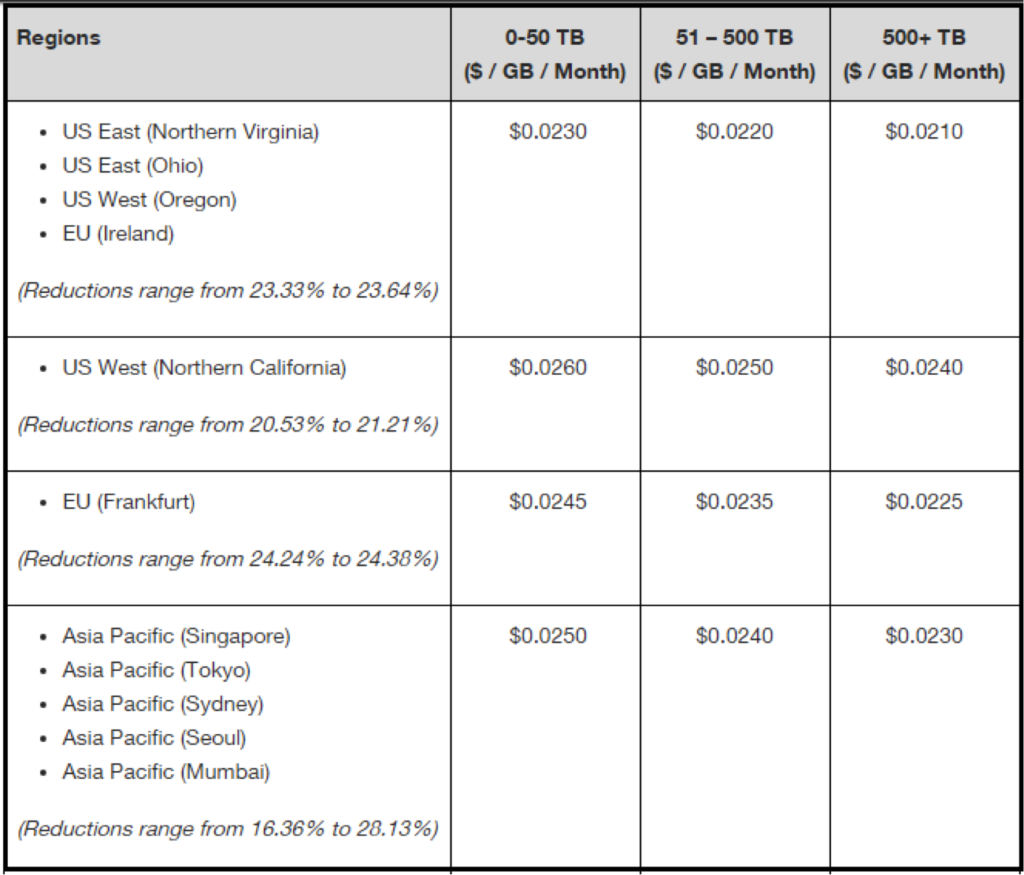
To put things simply, between October 2008 and November 2016 Amazon has cut its S3 pricing from $0.15/GB to $ 0.026/GB, an 82.67% cut. (Note: Because Amazon has expanded its pricing model to include other regions, we have used the highest pricing as of November 12, 2016, which is $0.026/GB for US West.)
To see how they’ve been cutting prices for Amazon S3, we’ve compiled a table with dates and prices.
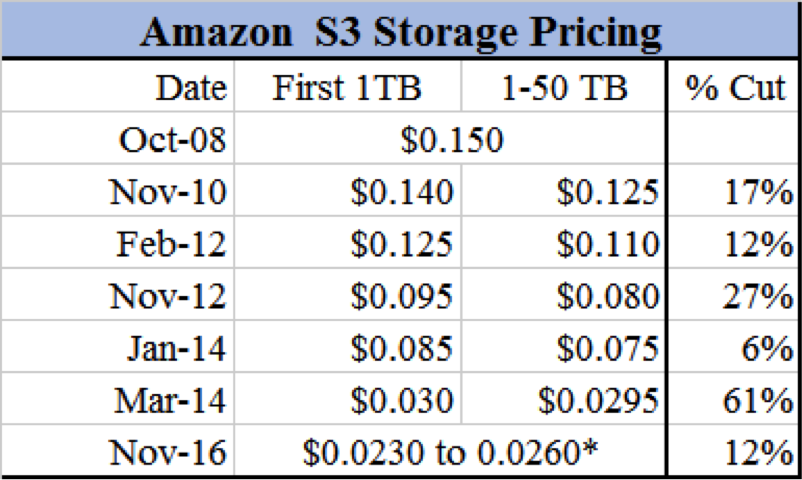
Note: Price cut from Oct 2008 to November 2010 calculated using 0-50 TB pricing in Oct-08 and 1-50 TB pricing in Nov-10. The rest of the calculation until March 2014 is the pricing for the 1-50 TB tier. For November 2016 we have used US West region’s pricing for 0-50 TB
Rendered graphically, this is what the S3 price cuts look like:
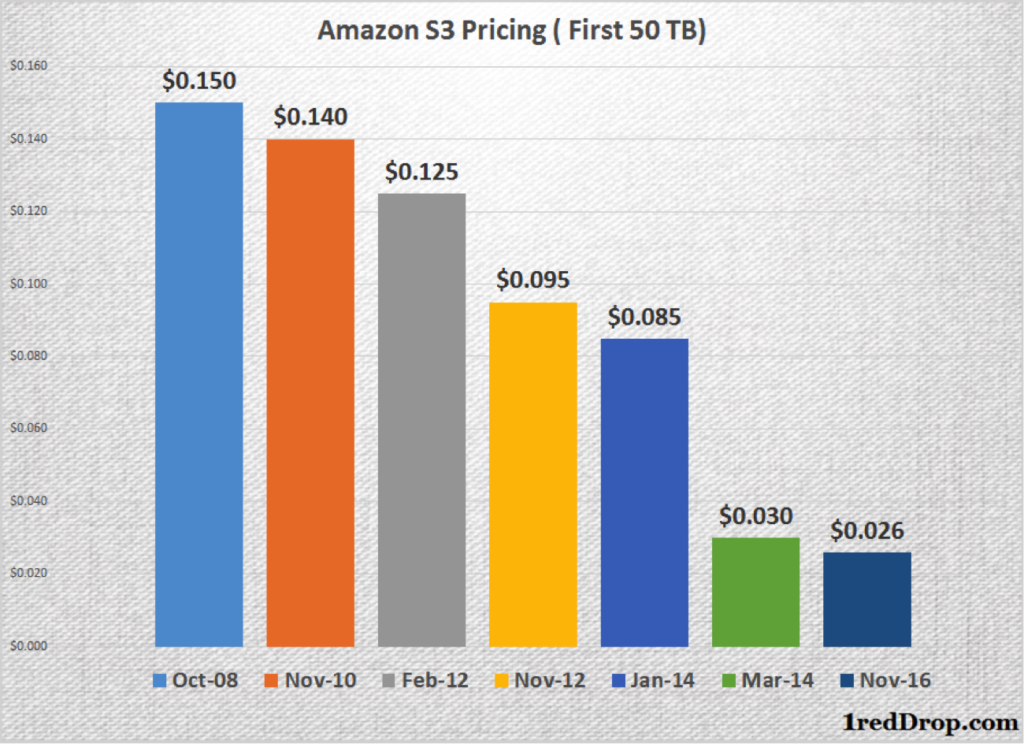
Over the period under discussion – 2008 to 2016 – Amazon has cut S3 pricing from 15 cents per GB down to 2.6 cents per GB. But even that isn’t the amazing part…
Cheaper, Yet More Profitable? How Is That Possible?
Here’s a look at AWS operating margins during that same period:
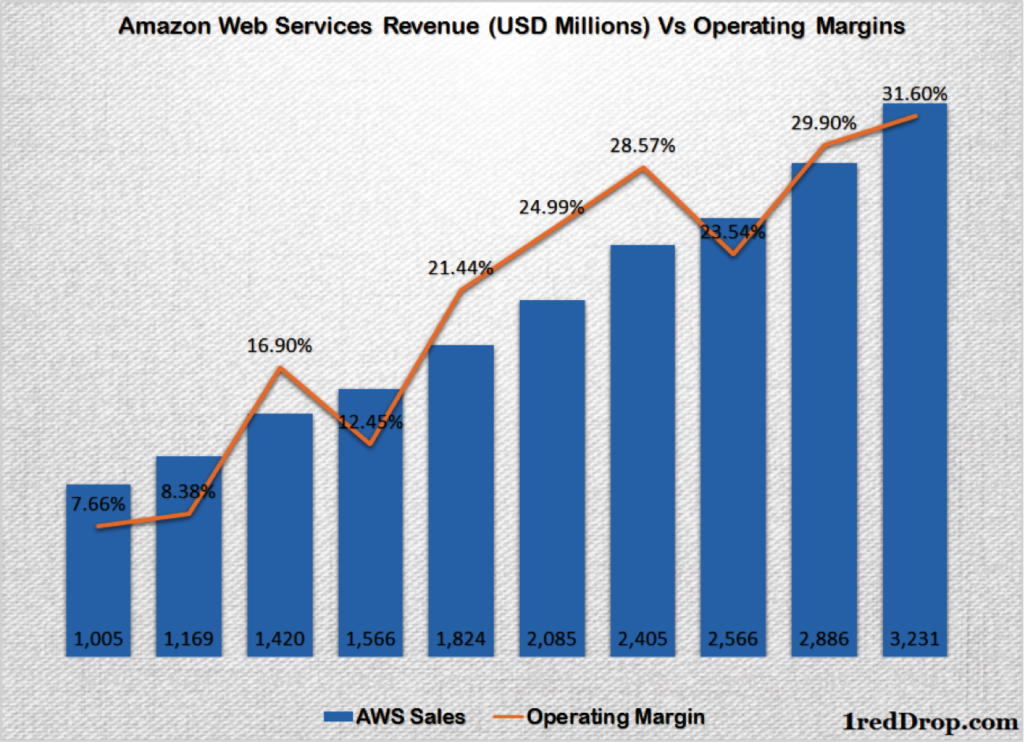
As you can see, not only have they slashed their pricing on S3, but despite the continuous price cuts, their overall profitability keeps growing – along with their revenues.
How?
The one-word answer to that questions is “services.”
Amazon might be cutting prices in one area, but it keeps adding a number of add-on services and at unbelievable rate. This is what Andy Jassy, CEO of AWS, said in an interview with Seattle Times last month:
“We’re going to launch 1,000 significant services or features this year.”
And therein lies the answer to the question.
Let me elaborate.
A Burger-maker’s Analogy
Imagine we’re talking about the McDonald’s Happy Meal for a minute. What if McDonald’s decided one day that “We’re going to keep cutting the price of the Happy Meal by ten cents every year, but we’re also going to add 20 more menu items that are complementary to the meal”? And let’s also assume that these menu items are priced at 20 cents each, and each with a healthy profit margin. For example, a super-sized Coke or a larger order of fries or whatever that might be.
What do you think is the natural thing to happen? Customers are going to see that they can upgrade their fries order to a super-large at 20 cents, or super-size their Coke for 20 cents and they’re going to say “Hey, that’s great value. Let’s take it.”
Enough customers do this, and what will happen is that McDonald’s can continue to keep driving the Happy Meal price down every year, but still make more money and more profits.
That’s what’s happening with AWS. The sheer number of high-value paid services they keep adding leads customers to add more to their shopping basket each time they interact with the company. The result – better profitability and higher revenues over a period of time.
And that’s essentially Amazon’s secret formula for success. They’re doing the same thing with Amazon Prime as well – the number of freebies and benefits they keep adding for Prime members is mind-blowing – but it turns out that Prime members spend more than twice what non-Prime shoppers spend. That makes Amazon’s retail business more profitable by offsetting shipping costs, and keeps the revenues flowing in as well.
Not many companies have mastered the art of growing operating margins while all the while cutting prices or keeping them where they are. And no other company in the world has taken this formula and turned it into a $100 billion business.
Our hats are off to Andy Jassy for driving this forward, and to Jeff Bezos for the vision that made him put Jassy at the top of AWS – and thereby, put AWS at the top of the public cloud infrastructure world.
Thanks for reading our work! We invite you to check out our Essentials of Cloud Computing page, which covers the basics of cloud computing, its components, various deployment models, historical, current and forecast data for the cloud computing industry, and even a glossary of cloud computing terms.
